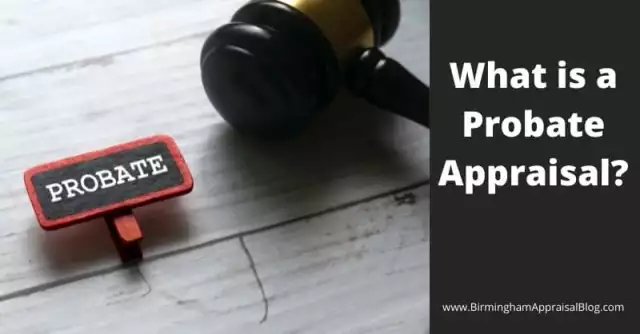Tips on appraising new construction homes
6 Tips for Appraising New Construction Homes
Excerpts: New construction is treated a little differently by lenders, FHA, and the GSEs. When appraising new construction homes, you must take into consideration certain features and attributes that don’t necessarily apply to re-sales. It requires more work, so you want to be sure that you are charging for your effort. However, perhaps more than that, you want to be sure you’re following the proper protocol. Stick to these best practices to ensure you cover all your bases.
3. Talk to multiple local builders You can gain valuable information from builders—as long as you talk to them now to evaluate current costs and value. Some of the best construction cost data is compiled by you as you complete new construction appraisal assignments. When appraising new proposed construction, the prior data can be reviewed for those construction projects that are most similar to the subject property in quality, size, and features and be used as cost data to support cost estimates for the current appraisal. As the cost of construction materials generally continue to spiral upwards, it may be necessary to adjust for time, depending on how old the cost data is.
To read more tips, click here
My comments: Well written and worth reading. New home construction appraisals can be tricky. I quit doing them a while ago – too many various hassles, but many appraisers like doing them. There are few new homes built in my area, except stacked condos. Land is too expensive.
Appraisal Business Tips
Humor for Appraisers
Click here to subscribe to our FREE weekly appraiser email newsletter and get the latest appraisal news!!
To read more of this long blog post with many topics, click Read More Below!!
NOTE: Please scroll down to read the other topics in this long blog post on VA appraisals, appraisal modernization, eliminate VA panel, unusual homes, mortgage origination stats, etc.
===================================================
Who Moved My Appraisal Cheese?
By Mark Buhler
Excerpts: If you have ever read or heard about the book titled “Who Moved My Cheese,” you may know the story about the four characters in the book and what the cheese refers to. The cheese is a metaphor for what you want in life or business. The characters all love cheese but are caught in a maze. When the cheese disappears, the four characters are faced with adapting to change. Two of the characters in the book, Scurry and Sniff, are willing to do whatever it takes to find the cheese. The other two characters, Hem and Haw, commiserate and complain that the cheese is gone. The moral of the story is to be quick to adapt to change so that you can experience more success and joy in life.
As an appraiser, I cannot help but make the connection between the characters in the book and appraisers. Complainers like Hem and Haw are abundant in the appraisal world. They are the most vocal amongst us appraisers. Appraisers that are willing to swim upstream and are willing to adapt to change are the survivors of our industry. How many appraisers do you think started out as trainees in a big firm, or worked as a staff appraiser as a newbie, and went out on their own to create their own businesses? Most of the appraisers that identify with Scurry and Sniff, that’s who! This mindset can set an appraiser apart from the appraisers that identify more with Hem and Haw.
The book is a series of lessons that can help appraisers.
To read more, click here
My comments: This book is popular with appraisers, especially when business is slow. The market changing again with increasing interest rates, in the inevitable ups and downs of mortgage lending. Appraisers who adapt will do okay and, more important, be positive and satisfied with appraising. I have always been a glass half full person. For example, I see mistakes as an opportunity to learn how to do better next time. Read this article and the classic book. I have the book on my bookshelf.1960s
================================================
‘Prairie House’ in Oklahoma with Swirling Cedar Shingles
Excerpts: The 1960 ‘prairie house’ in Norman, Oklahoma is an important piece of American architecture history. The vision of architect Herb Greene, the abode references everything from primordial creatures to protective shelters and futurist objects, with its curved silhouettes and quirky, wood shingled surfaces.
A feeling of protection is expressed by the sense of an enveloping coat of a mother hen’s ‘hovering over,’ as well as by the cave like interior.
To read more, click here
My comment: Take a Break and Check out the very interesting photos and text!
================================================
Lenders See Considerable Value in Appraisal Modernization
By Lyle Radke, Senior Director, Single-Family Collateral Risk
And Justin Alexander
Short with good graphics and easy to read.
Excerpts: To better understand lenders’ views on appraisal modernization, including benefits, implementation challenges, and possible applications, Fannie Mae’s Economic & Strategic Research (ESR) Group surveyed senior mortgage executives in February 2022 using its quarterly Mortgage Lender Sentiment Survey®.
Our survey results reveal a near-consensus opinion that appraisal modernization will help lenders, appraisers, and risk investors assess and manage collateral risk more effectively, while also benefiting consumers via greater appraisal accuracy, lower costs, and increased velocity of loan decisioning. To achieve this vision, industry participants will need to work together to resolve implementation challenges through training and investment in the infrastructure needed to operationalize new solutions.
To read more, click here Short with good graphics and easy to read.
To read more Research details, click here
To see More infographics click here
My comments: Lenders have always wanted faster appraisals with fewer hassles to close their loans faster. Other factors such as consumer cost are much less important, as seen in the stats above. Full appraisals take too long. Hopefully, there will be a new online “form” for all GSE appraisal reports in 2024. Trying to use the 2005 URAR form is sometimes like trying to put a square peg in a round hole!
The June issue of Appraisal Today (see below) is about what has changed since the 1980s and focuses on the past, present, and future of residential lender appraising.
June 2022 issue is the 30th Anniversary of This Newsletter
Lots of changes over the past 30 years!
What a wild ride it has been!!
Lots of changes over the years. Where are we going?
A look at the past, present, and future!
Topics:
—————————————————————-
To purchase the paid Appraisal Today newsletter go to
If you have any comments or info on any topics, please hit the reply button!! I’m always looking for something new ;>
================================================
Proposal to Eliminate the VA Fee Panel
Excerpt: On May 18, the Subcommittee on Economic Opportunity held a legislative hearing on the Discussion Draft of H.R. 7735, Improving Access to the VA Home Loan Act of 2022… It would require the VA to consider when an appraisal is unnecessary and when a desktop appraisal should be used and, a move from the VA Fee Panel to a lender select program. Mortgage Bankers Association advocated for the proposal while the Appraisal Institute opposed it.
To read more and watch (or scroll through) the recording of the hearing click here
My comments: One of the appraiser comments: “The VA process is without question the “GOLD STANDARD” of how appraisals should be completed from start to finish.”Don’t miss the 20+ appraiser comments plus the 2-hour video of the Subcommittee meeting. Because of the recent very strong purchase market, using VA for buyers has been more difficult in many areas as VA loans can take longer to close. As rates go up, VA will become more popular.
Of course, lenders want the VA to be the same as all the other mortgage options with waivers, desktops, etc. Then AMCs can take over VA appraisals and turn it into anti-appraiser scope creep, mass emailing of orders shopping for low fees, etc.
I wrote about doing VA appraisals in June 2014 in this newsletter, including how to get on the panel, pluses, and minuses, etc. VA is the best lender client. You are working for the veteran to be sure he or she does not overpay, finds out about problems, etc. You are not working for a lender who just wants to make the loan. Many appraisers told me they would never work for the VA for various reasons. Most really liked working for the VA. I wrote about these, and many other factors, this in my articles. The newsletter issue is posted on my paid subscriber-only web page – scroll down the page.
==============================================
Rocky Mountain $3.5M Castle in Denver
6,448-square-foot stone castle with eight bedrooms and nine bathrooms. Built with local stone in 1886. “The exterior of the home is 22-inch-thick lava stone,” says Usaj. Local architect William Lang designed the home with a signature three-story. It was listed for $1,575,000 in 2019, Usaj says. The current owners bought it just before the COVID-19 pandemic and updated the kitchens and bathrooms plus critical infrastructure.
To read more and see lots of photos, click here
===================================================
================================================
HOW TO USE THE NUMBERS BELOW. Appraisals are ordered after the loan application. These numbers tell you the future for the next few weeks. For more information on how they are compiled, go to www.mbaa.org
Note: I publish a graph of this data every month in my paid monthly newsletter, Appraisal Today. For more information or get a FREE sample issue go to https://www.appraisaltoday.com/products.htm or send an email to info@appraisaltoday.com . Or call 800-839-0227, MTW 7AM to noon, Pacific time.My comments:
Rates are going up. Make money while the market is still good!!
==================================================
Mortgage applications decreased 1.2 percent from one week earlier
Mortgage applications decreased 1.2 percent from one week earlier, according to data from the Mortgage Bankers Association’s (MBA) Weekly Mortgage Applications Survey for the week ending May 20, 2022.The Market Composite Index, a measure of mortgage loan application volume, decreased 1.2 percent on a seasonally adjusted basis from one week earlier. On an unadjusted basis, the Index decreased 2 percent compared with the previous week. The Refinance Index decreased 4 percent from the previous week and was 75 percent lower than the same week one year ago. The seasonally adjusted Purchase Index increased 0 percent from one week earlier. The unadjusted Purchase Index decreased 1 percent compared with the previous week and was 16 percent lower than the same week one year ago.“
The 30-year fixed rate declined for the second straight week to 5.46 percent but remains well above what borrowers were used to over the past two years. Most refinance borrowers continue to remain on the sidelines as a result, and refinance applications have fallen in nine of the past 10 weeks. Compared to January 2022, refinance activity is down 66 percent,” said Joel Kan, MBA’s Associate Vice President of Economic and Industry Forecasting. “Higher mortgage rates are also impacting purchase market conditions, as the purchase index remained close to lows last seen in the spring of 2020 when a significant portion of activity was put on hold due to the onset of the pandemic. Currently, higher rates, low inventory, and high prices are keeping prospective buyers out of the market.
”The refinance share of mortgage activity decreased to 32.3 percent of total applications from 33.0 percent the previous week. The adjustable-rate mortgage (ARM) share of activity decreased to 9.4 percent of total applications.
The FHA share of total applications increased to 11.3 percent from 11.1 percent the week prior. The VA share of total applications decreased to 10.4 percent from 10.5 percent the week prior. The USDA share of total applications remained unchanged at 0.5 percent from the week prior.
The average contract interest rate for 30-year fixed-rate mortgages with conforming loan balances ($647,200 or less) decreased to 5.46 percent from 5.49 percent, with points decreasing to 0.60 from 0.74 (including the origination fee) for 80 percent loan-to-value ratio (LTV) loans. The effective rate decreased from last week.
The average contract interest rate for 30-year fixed-rate mortgages with jumbo loan balances (greater than $647,200) decreased to 5.02 percent from 5.03 percent, with points decreasing to 0.41 from 0.61 (including the origination fee) for 80 percent LTV loans. The effective rate decreased from last week.
The average contract interest rate for 30-year fixed-rate mortgages backed by the FHA increased to 5.36 percent from 5.32 percent, with points increasing to 0.82 from 0.71 (including the origination fee) for 80 percent LTV loans. The effective rate increased from last week.The average contract interest rate for 15-year fixed-rate mortgages decreased to 4.72 percent from 4.73 percent, with points decreasing to 0.70 from 0.82 (including the origination fee) for 80 percent LTV loans. The effective rate decreased from last week.
The average contract interest rate for 5/1 ARMs increased to 4.49 percent from 4.42 percent, with points increasing to 0.76 from 0.73 (including the origination fee) for 80 percent LTV loans. The effective rate increased from last week.
The survey covers over 75 percent of all U.S. retail residential mortgage applications, and has been conducted weekly since 1990. Respondents include mortgage bankers, commercial banks, and thrifts. Base period and value for all indexes is March 16, 1990=100
.================================================







